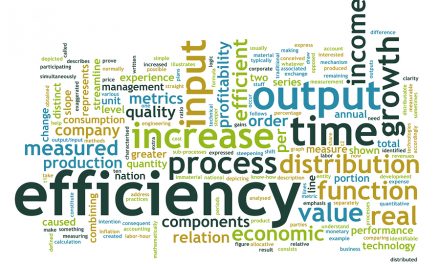Not exactly at the top of everyone’s Christmas list eh?
But they should be!
Christmas is one of those special times of the year where most of us feel amplified connectivity.
It’s a time for giving, socialising, reminiscing, reflecting and shortly afterwards, for planning.
The Christmas break is usually the time when we get chance to stop working and start planning for the following year, setting new goals that will enhance our lives and improve our circumstances.
But the biggest threat to not hitting our goals and targets, is by giving up on them too soon.
We find a reason to allow ourselves to stop pursuing a particular target because it seems harder than we thought it would be, or we find a new shiny object to chase.
But quite often, we give up because we don’t appreciate exactly how far we have come.
Slow incremental improvements often go unnoticed. Unless there’s a huge sudden breakthrough, the success of becoming something we desired a few months ago, just creeps up and actualises itself without us really noticing.
The bliss we were looking for has been diluted by time and the dopamine effect just wasn’t appreciated.
How many goals have we been so close to achieving, that we gave up on?
6 months later, that goal seems relevant again and we chastise ourselves for giving up on it previously.
We feel like a loser all over again!
So while you have time to relax, reflect and think about what you’ve achieved this year, how are you going to accurately measure your results so you don’t lose sight of your progress?
Are you going to rely on your memory? – that can fade after days with the huge amount of information we have to process every day.
Do you have a journal that you could refer back to, how did you feel when you first made the plan to set this goal? Do you know if you are on track to hitting the goal?
Do you have any KPI’s (Key Performance Indicators), that you have measured weekly?
Keeping track of your progress through regular measurement of your most important figures and milestones can record the progress you are making by tracking actual events and providing concrete evidence.
If the figures are reported accurately, they will not lie.
It’s common for us to ‘feel’ as though things are not going as planned, and that we are under-achieving.
Many times I have felt this way about my personal targets, thinking, “I haven’t won enough sales for the company.”
That may be true short term, but when I referred back to the KPI’s, I had usually over achieved when looking at the month or quarter and I have grown my achievements every single year since I started to record them.
It’s easy to feel this way short term, but these figures do not lie.
Suddenly, I realise that I was caught in the moment, beating myself up because this month wasn’t what I’d hoped for.
Reminding myself with 100% accurate data, changes the way I feel about myself and my performance with immediate effect, and can prevent me giving up prematurely.
So, how do you go about setting yourself a set of meaningful KPI’s?
You can get as detailed as you want with these, although it’s important to really focus on the handful of measurements that make the big differences.
My sales KPI’s are a simple collection of data that I record on a spreadsheet which gathers the information from reports on our CRM system.
So I measure these reports:
- Number of Surveys carried out (are you creating enough activity?)
- Number of Proposals issued (are you following up on the activity?)
- Conversion % Survey to Sale (how are your sales persons performing?)
- Conversion % Lead to Sale (What is the quality of your leads?)
- Conversion % Proposal to Sale (are your prices right?)
- AOV (Average Order Value)
- Total Sales won in £ (is your Average order value stable?)
- Total number of Sales won (are you on target?)
They are measured on a spreadsheet weekly so I can keep track of my progress and know for sure if I am performing at my planned level to achieve the bigger business targets. The results are then totalled in monthly and quarterly columns as well as a year to date column. (this is vital to ensure you can pull yourself out of a bad week by having confidence in your overall performance).
Making decisions also becomes easier once you know your numbers in this way.
Am I making enough sales?
Why is my conversion rate dropping, is our marketing working as it should be?
Am I winning more sales than usual, are our prices due for an increase?
Have I generated enough activity to win the desired amount of sales, have I produced enough proposals?
Knowing these figures gives you the clarity to see exactly where things are going well or not so well.
A dip in sales usually correlates to either a dip in activity, not getting enough proposals out, or a change in marketing results.
In my case it’s important to look at the 2 sets together as the marketing drives the quality and number of potential sales.
The marketing KPI’s that I track are:
- Lead target (how many do we need to hit our goal?)
- Total leads in (are we on target to hit the goal?)
- % of rejected leads (measures effectiveness of your marketing)
- Cost per lead (measures your ROI)
- Conversion % Lead to Sale (measures performance of marketing and sales process)
- Conversion % Lead to Survey (measures quality of leads/ marketing)
So, having a business sales goal of £1,000,000 in total sales in one year is easily broken down into a set of KPIs that can be tracked by the week to ensure that we don’t feel as if we’re going off track and then give up on our goal.
Here’s an example:
£1,000,000 in sales / average order value (£7000) = number of sales required = 143.
Conversion % lead to sale is 10%, so 1430 leads required.
1430 leads / 50 working weeks = 29 leads per week.
143 sales / 50 working weeks = 2.86 sales per week (at £7000 AOV).
Lead to Survey conversion rate is 19% so we are going to book 5.51 surveys per week.
Survey to Sale conversion rate is 51% winning us 2.81 sales per week.
Once you have been measuring these figures for a while, you can rely on the numbers.
My key focus priorities because of these KPI’s are:
Ensure we get 29 leads a week Ensure I hit 5.51 surveys a week
Ensure I win 2.86 sales per week at £7000 AOV
It’s important to be aware that any changes in your processes will make a difference to your results, so beware of making big sudden changes in your marketing or activities.
So what is your goal? How can you measure the important functions required to hit that goal?
You can use KPI’s to measure most performances – Health, Finances, Investments, Consumption, personal and business performances.
It’s a subject worth thinking into over a mince pie this Christmas! Once you have set your goals for next year, keep yourself on track by putting the right tools in place to ensure you measure your progress.
Author: Andy Stace





